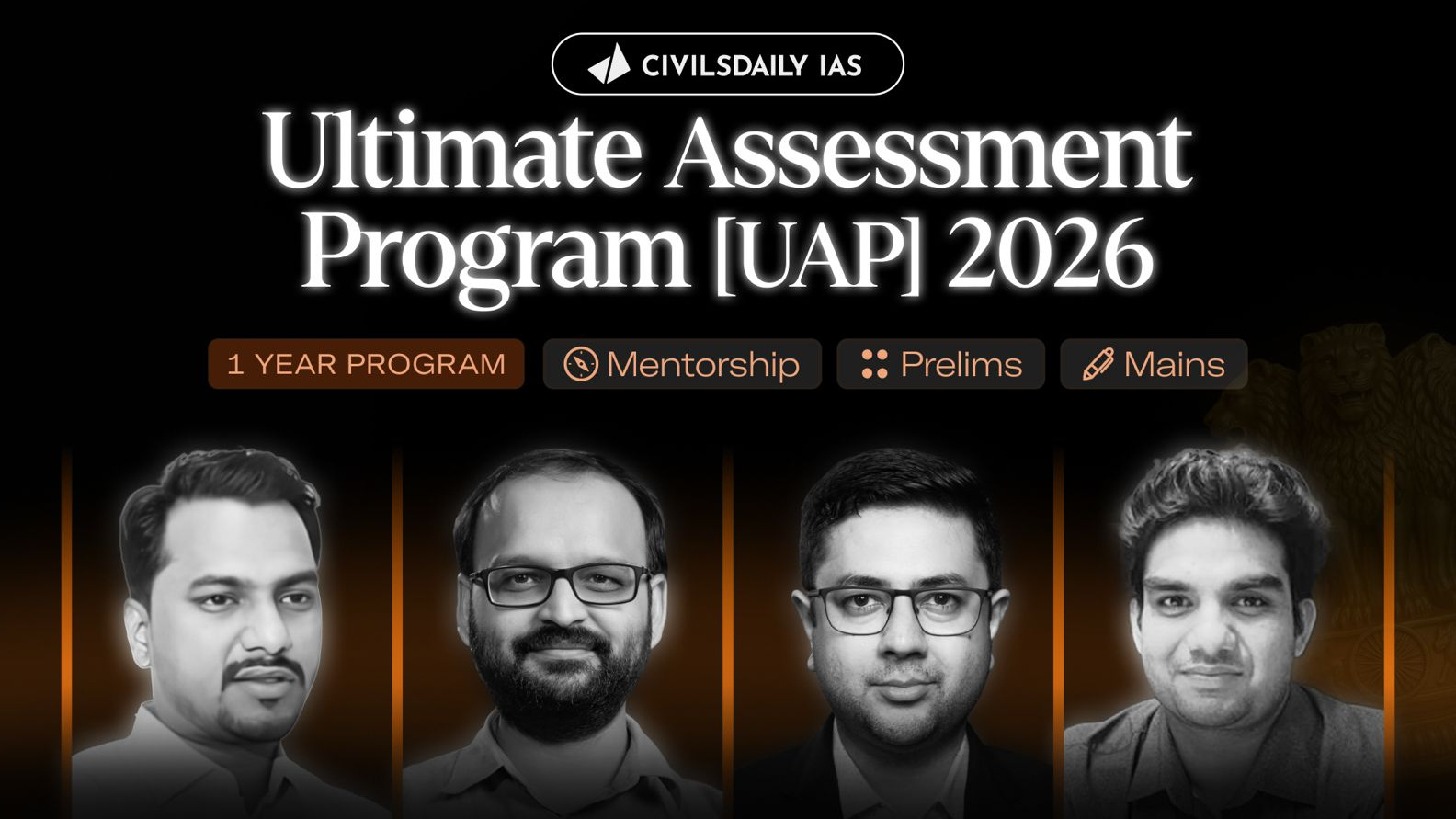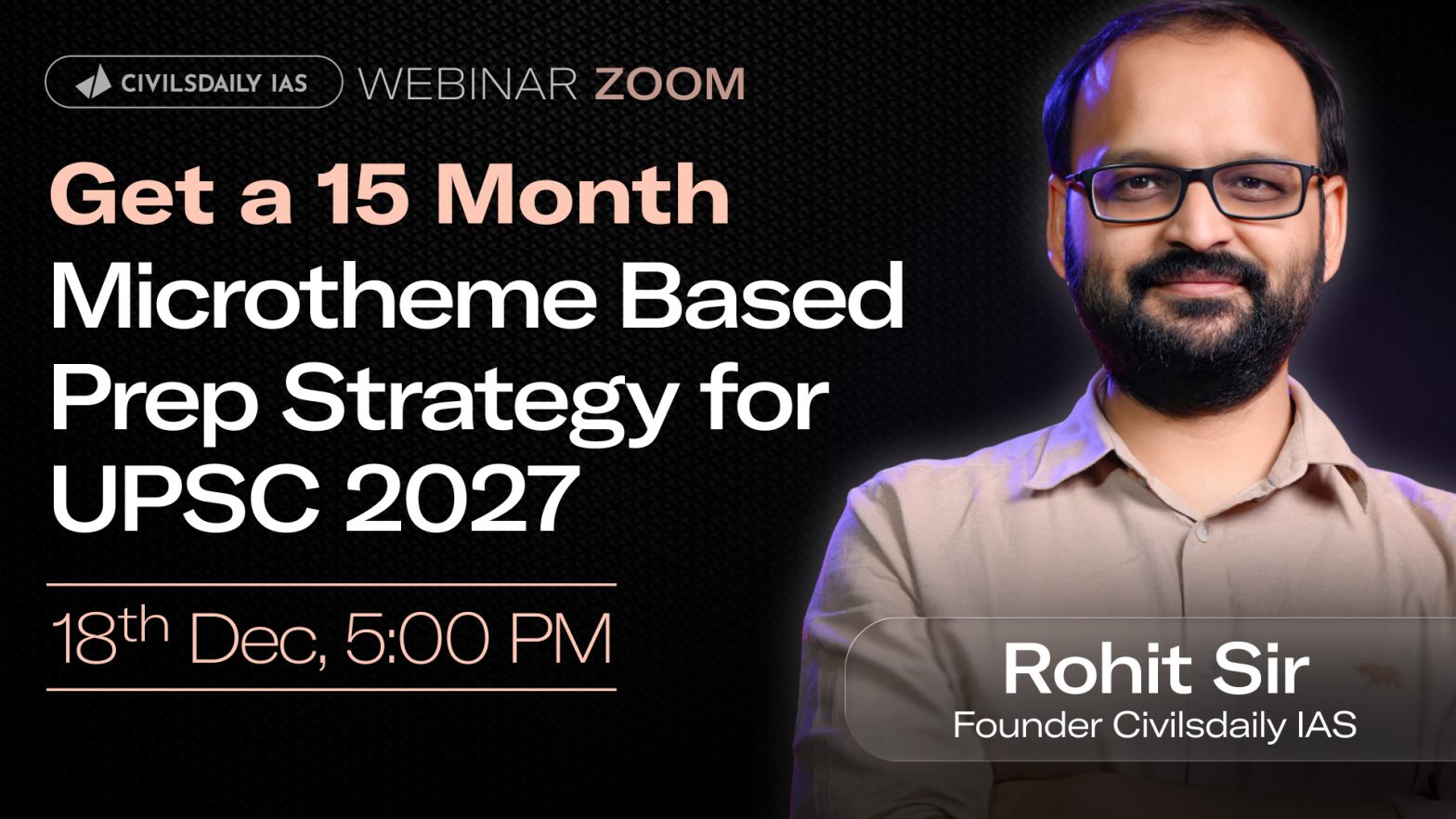





Burning IssuesInterview ProgramMotivation BytesPrelims DailyPrevious Year Question PaperProgram LaunchRanker WebinarsThe Hindu Op-edToppers TestimonialsUPSC Mains Topic-Wise PYQsUPSC PreparationUPSC SyllabusX Factor Notes
21st August
21 August 2017 | Prelims Daily with Previous Year Questions & Tikdams
Q.1) ‘Indra Sawhney Case of 1992’ was related to a) Basic Structure of the Indian Constitution b) Part III of the Indian Constitution c) Reservation d) Validity of Indian Penal Code Q.2) Recently, ‘Value capture financing (VCF)’ is in news. It is a type of public financing that recovers some or all of the value… Continue reading 21 August 2017 | Prelims Daily with Previous Year Questions & Tikdams
20th August
Essay challenge
I can’t see any weekly essays.. Did u stop the weekly essay challenge.?? also pls make it available with official review similar to Target Mains.
Public Administration Pilot Answer Writing Programme | Daily Answer Review by UPSC Veterans | Starts 21st August
Archive (click on highlighted days to attempt the daily quiz) 21 Aug 2017 | Day 1 22 Aug 2017 | Day 2 23 Aug 2017 | Day 3 We are coming up with a pilot programme for Public Administration optional students as a precursor to Test series being launched for them after a few days.… Continue reading Public Administration Pilot Answer Writing Programme | Daily Answer Review by UPSC Veterans | Starts 21st August
19th August
Toppers Testimonials | Aman Mittal | AIR-20 CSE 2016
About: Rank in CSE-2016 20 Number of attempts (include present one) 1 Medium (English/Hindi) English Optional Subject Electrical Engineering Prelims Strategy: My preparation started about a year before the Prelims because I prepared for the Prelims and Mains simultaneously (the syllabus is largely overlapping). However, serious preparation for the Mains like answer writing and… Continue reading Toppers Testimonials | Aman Mittal | AIR-20 CSE 2016
Toppers Testimonials | Rajarshi Shah | AIR-81 CSE 2016
About: Rank in CSE-2016 81 Number of attempts (include present one) 4 Medium (English/Hindi) English Optional Subject Prelims Strategy: The changing pattern of prelims every year has become a concern for many aspirants. The 2017 paper is testimony to that. In such scenario, scoring high marks in prelims has become quite challenging. I had focused… Continue reading Toppers Testimonials | Rajarshi Shah | AIR-81 CSE 2016
Toppers Testimonials | Kumar Harsh | AIR-43 CSE 2016
About: Rank in CSE-2016 43 Number of attempts (include present one) 1 Medium (English/Hindi) English Optional Subject Mechanical engineer Prelims Strategy: Try to know at least 3-4 important points on every topic – current or dynamic. Watch Rajya Sabha TV debates. As it is a visual medium it helps remember better. Don’t become… Continue reading Toppers Testimonials | Kumar Harsh | AIR-43 CSE 2016
Toppers Testimonials | Milind Bapna | AIR-61 CSE 2016
About: Rank in CSE-2016 61 Number of attempts (include present one) 3 Medium (English/Hindi) English Optional Subject Prelims Strategy: My mantra is KEEP IT SIMPLE. Read from limited sources, revise more and have a sense of self belief that whatever you are reading is enough. Generally most aspirants keep on buying new materials… Continue reading Toppers Testimonials | Milind Bapna | AIR-61 CSE 2016
Toppers Testimonials | Dr Nandhinidevi K | AIR-54 CSE 2016
About: Rank in CSE-2016 54 Number of attempts (include present one) Medium (English/Hindi) English Optional Subject Medical Science Prelims Strategy: Prelims is not just about mugging up facts- understand the concepts HISTORY- I made separate notes on INC meetings – president- decision and timeline of events. ART AND CULTURE – Focus on architecture ,… Continue reading Toppers Testimonials | Dr Nandhinidevi K | AIR-54 CSE 2016
Toppers Testimonials | M Prathap | AIR-21 CSE 2016
About: Rank in CSE-2016 21 Number of attempts (include present one) 1 Medium (English/Hindi) English Optional Subject Prelims Strategy: Prelims is full of concepts and facts. In the beginning go for integrated preparation. Keep your sources minimum Preferred books: The basic book that everyone uses. One NCERT and one basic book for each… Continue reading Toppers Testimonials | M Prathap | AIR-21 CSE 2016
Toppers Testimonials | Suman Sourav Mohanty | AIR-9 CSE 2016
About: Rank in CSE-2016 9 Number of attempts (include present one) 2 Medium (English/Hindi) English Optional Subject Public administration Prelims Strategy: Don’t Preferred books: History- Bipan Chandra; NCERT, BANDHOPADHYAY- GAVE CONCEPTUAL CLARITY+ notes Culture – NCERT, CCRT website Geography- current affairs mainly because questions are more dynamic in this, NCERT World history- Norman Lowe,… Continue reading Toppers Testimonials | Suman Sourav Mohanty | AIR-9 CSE 2016
Toppers Testimonials | Ganga Singh | AIR-33 CSE 2016
About: Rank in CSE-2016 33 Number of attempts (include present one) 2 Medium (English/Hindi) Hindi Optional Subject Hindi literature Prelims Strategy: Be consistent with your studies and also do smart study. Preferred books: Geography- NCERT and Oxford Atlas available in hindi. History – NCERT (old and new) Polity- NCERT, Political theory, Laxmikanth Economics-… Continue reading Toppers Testimonials | Ganga Singh | AIR-33 CSE 2016
Toppers Testimonials | Abhilash Mishra | AIR-5 CSE 2016
About: Rank in CSE-2016 5 Number of attempts (include present one) 3 Medium (English/Hindi) English Optional Subject Prelims Strategy: Keep all your data handy. Briefly have facts and recent developments with you. Notes are not very important in prelims. Preferred books: Basic books. Views about importance of Test series: Extremely important. What to… Continue reading Toppers Testimonials | Abhilash Mishra | AIR-5 CSE 2016
Toppers Testimonials | Athul Janardhanan | AIR-13 CSE 2016
About: Rank in CSE-2016 13 Number of attempts (include present one) 2 Medium (English/Hindi) English Optional Subject Geography Prelims Strategy: Don’t Preferred books: Standard material. Views about importance of Test series: I took tests series to see progress and tricks and how to take risks. One gets better with practice. What to focus on… Continue reading Toppers Testimonials | Athul Janardhanan | AIR-13 CSE 2016
Toppers Testimonials | Tejasvi Rana | AIR-12 CSE 2016
About: Rank in CSE-2016 12 Number of attempts (include present one) 2 Medium (English/Hindi) English Optional Subject Prelims Strategy: For prelims never attempt less than 90 questions. This I say with surety because if you attempt those questions also in which you have been able to cross one or two options out of… Continue reading Toppers Testimonials | Tejasvi Rana | AIR-12 CSE 2016
Toppers Testimonials | Gopalakrishna Ronanki | AIR 3 – CSE 2016
About: Rank in CSE-2016 3 Number of attempts (include present one) 4 Medium (English/Hindi) English Optional Subject Prelims Strategy: The only thing I did was a consistent and planed preparation without taking any breaks in studies. Preferred books: The usual and standard material. What to focus on for Mains Prep? Answer writing is the… Continue reading Toppers Testimonials | Gopalakrishna Ronanki | AIR 3 – CSE 2016
[Official Answer] 19 Aug 2017 | Target Mains: GS Questions With Official Answers
GS Paper 1- Indian society Q.1) While Globalization has destroyed many traditional practices and Industries in India it has also given new lease of life to some of them who were on the ventilator. Examine. Globalization (or globalisation) is the process of international integration arising from the interchange of world views, products, ideas and mutual sharing, and… Continue reading [Official Answer] 19 Aug 2017 | Target Mains: GS Questions With Official Answers
19 Aug 2017 | GS 4 | Election Commission has announced general election and model Code of Conduct has come into force. You are sub divisional magistrate and returning officer of an assembly constituency. A candidate belonging to a political party has been permitted by you to hold a meeting at 12 P.M. to a public place. Suddenly you get a request from a ruling party candidate that chief minister has made a programme of holding election meeting on the same venue and on the same date at 2 P.M. There is no alternative place where ruling party could hold its election meeting. There is every likelihood of clashes between supporters of both candidates. (20 marks 250 words) (a) What are the options available to you? (b) Evaluate each of these options and choose the option which you would adopt giving reasons.
GS paper 4- Ethics & integrity Q.4) Election Commission has announced general election and model Code of Conduct has come into force. You are sub divisional magistrate and returning officer of an assembly constituency. A candidate belonging to a political party has been permitted by you to hold a meeting at 12 P.M. to a public place.… Continue reading 19 Aug 2017 | GS 4 | Election Commission has announced general election and model Code of Conduct has come into force. You are sub divisional magistrate and returning officer of an assembly constituency. A candidate belonging to a political party has been permitted by you to hold a meeting at 12 P.M. to a public place. Suddenly you get a request from a ruling party candidate that chief minister has made a programme of holding election meeting on the same venue and on the same date at 2 P.M. There is no alternative place where ruling party could hold its election meeting. There is every likelihood of clashes between supporters of both candidates. (20 marks 250 words) (a) What are the options available to you? (b) Evaluate each of these options and choose the option which you would adopt giving reasons.
19 Aug 2017 | GS 3 | Discuss the impact of change in repo rate on common man? why it is said that RBI should be more aggressive in cutting the repo rate?
GS paper 3- Indian Economy Q.3) Discuss the impact of change in repo rate on common man? why it is said that RBI should be more aggressive in cutting the repo rate? source: https://www.civilsdaily.com/op-ed-snap-economic-graffiti-dont-be-cautious-rbi/
19 Aug 2017 | GS 2 | Critics argue that private hospitals focussed on profits will do no good to the poor who can’t pay for their services, so the government must step in to provide free health care. In the light of above statement critically examine the NITI Aayog’s recent proposal for the partial privatisation of district-level government hospitals.
GS paper 2-Polity & Governance Q.2) Critics argue that private hospitals focussed on profits will do no good to the poor who can’t pay for their services, so the government must step in to provide free health care. In the light of above statement critically examine the NITI Aayog’s recent proposal for the partial privatisation of district-level… Continue reading 19 Aug 2017 | GS 2 | Critics argue that private hospitals focussed on profits will do no good to the poor who can’t pay for their services, so the government must step in to provide free health care. In the light of above statement critically examine the NITI Aayog’s recent proposal for the partial privatisation of district-level government hospitals.
19 Aug 2017 | GS 1 | While Globalization has destroyed many traditional practices and Industries in India it has also given new lease of life to some of them who were on the ventilator. Examine.
GS Paper 1- Indian society Q.1) While Globalization has destroyed many traditional practices and Industries in India it has also given new lease of life to some of them who were on the ventilator. Examine.
Slide Anything shortcode error: A valid ID has not been provided






